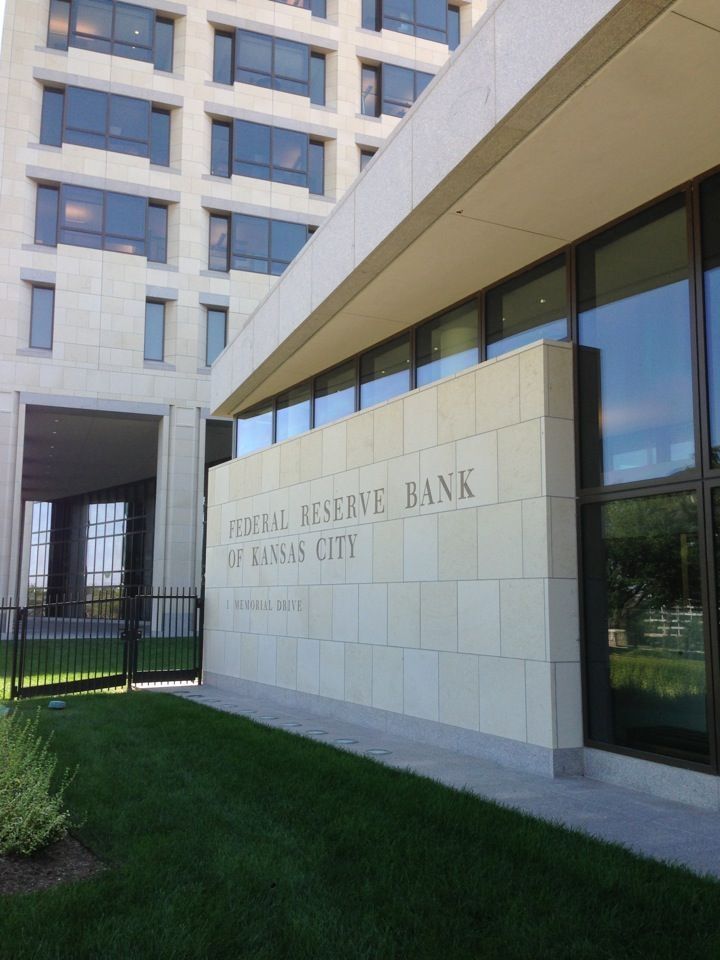Fed Beige Book: Economic Activity Declined in All Districts
Overall Economic Activity
Economic activity declined in all Districts – falling sharply in most – reflecting disruptions associated with the COVID-19 pandemic. Consumer spending fell further as mandated closures of retail establishments remained largely in place during most of the survey period. Declines were especially severe in the leisure and hospitality sector, with very little activity at travel and tourism businesses. Auto sales were substantially lower than a year ago, although several Districts noted recent improvement. A majority of Districts reported sharp drops in manufacturing activity, and production was notably weak in auto, aerospace, and energy-related plants. Residential home sales plunged due in part to fewer new listings and to restrictions on home showings in many areas. Construction activity also fell as new projects failed to materialize in many Districts. Commercial real estate contacts mentioned that a large number of retail tenants had deferred or missed rent payments. Bankers reported strong demand for PPP loans. Agricultural conditions worsened, with several Districts reporting reduced production capacity at meat-processing plants due to closures and social distancing measures. Energy activity plummeted as firms announced oil well closures, which led to historically low levels of active drilling rigs. Although many contacts expressed hope that overall activity would pick-up as businesses reopened, the outlook remained highly uncertain and most contacts were pessimistic about the potential pace of recovery.
Employment and Wages
Employment continued to decrease in all Districts, including steep losses in most Districts, as social distancing and business closures affected employment at many firms. Securing PPP loans helped many businesses to limit or avoid layoffs, although employment continued to fall sharply in retail and in leisure and hospitality sectors. Contacts cited challenges in bringing employees back to work, including workers’ health concerns, limited access to childcare, and generous unemployment insurance benefits. Overall wage pressures were mixed as some firms cut wages while others implemented temporary wage increases for essential staff or to compete with unemployment insurance. Most Districts noted wage increases in high-demand and essential sectors, while wages were flat or declining in other sectors.
Prices
Pricing pressures varied but were steady to down modestly on balance. Weak demand weighed on selling prices, with some contacts noting discounting for apparel, hotel rooms, and airfare. Several Districts also reported low commodity prices, including oil, steel, and several agricultural commodities. Supply chain disruptions and strong demand led to higher prices for some grocery items including meat and fresh fruit. One District reported that firms faced additional costs related to safety protocols and social distancing compliance, while another District noted that the costs of personal protective equipment had risen due to strong demand.
Federal Reserve Bank of Kansas City

Summary of Economic Activity
Tenth District economic activity declined substantially since the previous survey, and contacts remained pessimistic about activity levels in the months ahead despite some easing of restrictions related to COVID-19. Consumer spending decreased at a faster pace in April and early May, with particularly weak sales at auto, restaurant, tourism and healthcare establishments. Manufacturers reported a record drop in activity as production plunged at both durable and non-durable goods plants in April. Transportation, wholesale trade, and professional and high-tech services contacts also reported lower sales, and additional declines were anticipated in the months ahead. Residential and commercial real estate activity dropped significantly, and construction activity fell at a modest pace. Energy activity declined further as firms announced well shut-ins to lower oil production. The agriculture sector also weakened further as disruptions at meat-packing plants worsened and cattle and corn prices declined sharply. District employment fell sharply over the past two months, but the pace of job losses moderated some in the last couple of weeks. Wages fell modestly, and input and selling prices declined across most District sectors.
Employment and Wages
District employment and employee hours were down moderately compared to the prior survey period and were substantially below year-ago levels. After a dramatic spike in initial claims for unemployment insurance in late March and April, the number of new claims declined in recent weeks but remained historically high. However, contacts in all sectors, with the exception of retail trade and real estate, expected continued declines in employment over the next few months, albeit at a more moderate pace.
A majority of respondents continued to report no labor shortages, but some contacts did note difficulties finding truck drivers and hourly food-service workers. Wages fell modestly, but slight gains were expected in the coming months.
Prices
Input and selling prices declined across most District sectors in April. However, retail trade contacts noted modest growth in both input and selling prices. Input and selling prices declined slightly in the restaurant sector, but were expected to rise moderately in the next few months. Transportation contacts reported moderately lower input and selling prices and expected both to fall further in the months ahead. Construction supply respondents noted a moderate decline in selling prices and expected a slight drop in prices going forward. Manufacturers reported slightly lower prices for both finished products and raw materials prices, but expected prices to pick up slightly in the coming months.
Consumer Spending
Consumer spending decreased at a steeper pace since the last survey period as regional businesses continued to be negatively affected by COVID-19. Sales declined further in auto, restaurant, and tourism sectors, and most grocers and pharmacies reported some decline since the last survey as well. Activity remained low for District health services, with fewer sales and fewer hours, while input prices were higher than a year ago. Auto sales were down for all contacts compared with a year ago, and contacts expected inventory levels to expand further due to low sales expectations in the near term. Compared with the previous survey and a year ago, restaurant sales and employment levels contracted sharply. The hotel and tourism sector experienced steep losses due to COVID-19 shutdowns of non-essential businesses. Nearly all firms reported taking measures to cover shortfalls in revenues experienced as a result of the COVID-19 pandemic, and over two-thirds applied for the SBA PPP loan program. Expectations for future consumer activity improved only slightly compared with the previous survey period, and remained historically low.
Manufacturing and Other Business Activity
Manufacturing activity fell at a record pace in April as COVID-19 continued to weigh on firms. The decrease in manufacturing activity was steepest at durable goods factories such as primary and fabricated metals, but activity at non-durable goods plants including food and beverage manufacturing also declined. Production, new orders, employment, and raw materials inventories all dropped further compared to the previous survey period and year-ago levels. On the other hand, supplier delivery time increased. More than two-thirds of factory contacts reported applying for SBA PPP loans. However, a number of firms had not received funds by late April. Expectations for future activity rose compared to the last survey period, but remained slightly negative.
Outside of manufacturing, sales decreased for firms in the transportation sector, and several firms reported layoffs and increased use of paid time off for employees since the previous survey period. Recent sales declined for wholesale trade, but remained around year-ago levels. Sales were also down for professional and high-tech services sectors in April and were below year-ago levels. Expectations in the transportation, wholesale trade, and professional and high-tech services sectors remained very negative, as firms anticipated significantly lower sales, employment levels, capital expenditures, and prices in coming months.
Real Estate and Construction
Residential and commercial real estate activity declined substantially since the previous survey, while construction activity fell modestly. Residential sales decreased sharply as stay-at-home orders reduced buyer traffic. New listings also fell significantly, and inventories were well below year-ago levels. Despite a decline in activity, home prices held steady and remained above year-ago levels. Home showings increased significantly over the past couple of weeks as restrictions eased, and residential real estate activity is expected to pick up modestly in the coming months. Residential and commercial construction activity declined modestly, and construction supply firms noted a slight increase in sales due to a pick-up in home improvement projects. Commercial real estate conditions deteriorated as vacancy rates increased, while absorption and sales declined. Access to credit was more difficult than last year, and overall commercial real estate activity was projected to worsen significantly in the next few months.
Banking
Since the last survey, loan demand continued to decline modestly and credit standards increased somewhat across most loan categories. Bankers indicated a sharp decrease in the demand for consumer loans and commercial real estate loans, while reporting a modest decrease in agriculture loans and a slight decrease in commercial and industrial loans. By contrast, bankers noted a slight increase in residential real estate loan demand. Loan quality declined moderately from a year ago and was anticipated to decrease significantly over the next six months. Bankers continue to carefully monitor the effects of COVID-19 on the local economy.
Energy
Energy activity collapsed further since the previous survey, and expectations for future drilling and business activity remained negative. Revenues decreased and capital spending plans declined. The number of active oil and gas rigs in the District fell dramatically to historic lows as firms announced well shut-ins to ease production levels. The sharp drop in demand for energy production due to the global pandemic continued to weigh on the outlook for energy activity. Low oil and gas prices also remained an issue for District firms, negatively impacting profitability. Most firms did not expect energy price levels to pick up significantly in the near term, and expectations for rig counts and employment levels remained subdued.
Agriculture
The farm economy in the Tenth District weakened further alongside developments related to COVID-19. As of the second week of May, roughly a quarter of U.S. meatpacking and food processing plants with confirmed COVID-19 cases were located in the District. As disruptions in meat and food supply chains worsened and a substantial slowdown in ethanol production continued, cattle and corn prices declined sharply through early May. Alongside significant reductions in demand for corn used in ethanol, corn supply also was forecasted to be the largest on record in 2020. Contacts reported that weak market conditions likely will have major implications for producer cash flows in coming months. Despite a more pessimistic environment, farmland values in the region remained relatively steady.
For more information about District economic conditions visit: www.KansasCityFed.org/Research/RegionalEconomy



